Plastic pollution in oceans has been a burning concern for the past few years, and it hasn’t spared the wonder of California, Lake Tahoe. A study on Lake Tahoe published in Applied Spectroscopy revealed a groundbreaking concern regarding the extent of plastic pollution. The study showed the existence of around 133 pieces of plastic per mile of this iconic lake.
How Was Lake Tahoe Discovered
Lake Tahoe was discovered during excursions to the American West in the mid-1800s. History tells us that the lake was first encountered when explorers, the Stevens-Townsend-Murphy Party party led by John C. Fremont, stumbled upon its shores in 1844 during a mapping quest through the Sierra Nevada. What they had witnessed was a pristine alpine lake brimming with beauty.

As expected, due to this hidden gem that added allure to the untamed West, words spread across town! Alongside, another excursion led by Kit Carson and the Whitney Survey offered their assistance in mapping and documenting the place. Here’s a fun fact, the lake’s name is thought to originate from the word “da ow a ga” from Washo Native American meaning “edge of the lake”.
The Shocking Findings Of Plastic Waste
Some troubling facts about Lake Tahoe have been brought to light recently. A study published in the journal Nature has found alarming levels of microplastic pollution in this sapphire lake. What’s even shocking is that the study has analyzed 38 lakes across 23 countries, and discovered a disturbing reality about Tahoe. It revealed that this lake harbored the third-highest concentration of microplastics per cubic meter among all the lakes sampled.
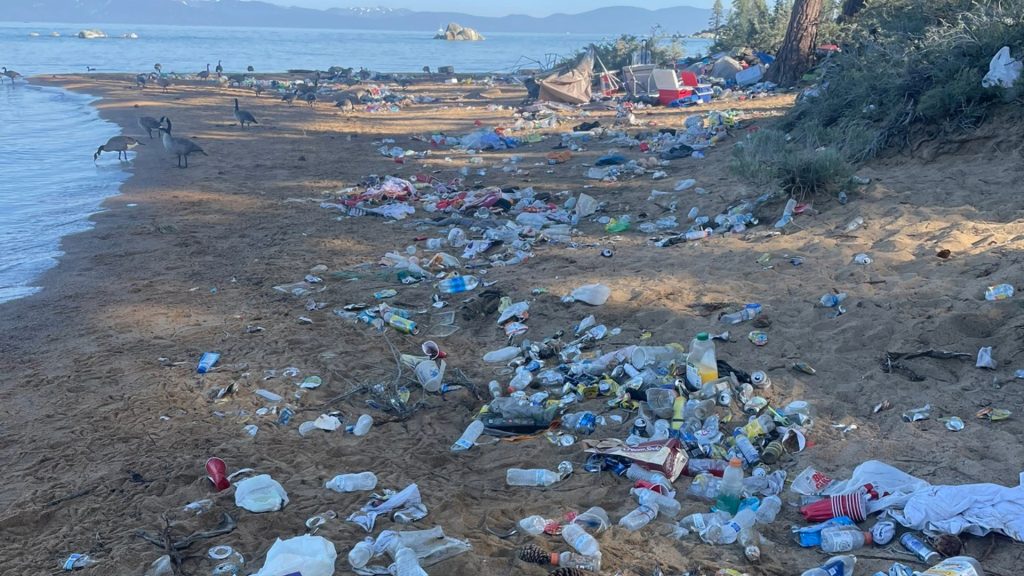
Scientists found an average of 133 pieces of plastic per mile within the lake’s waters. This is many times higher than that seen in other nearby lakes. This lingering problem risks not only the lake’s vulnerable ecosystem but also the health of the millions who visit the lake each year. The study found that these plastic particles are infiltrating several layers of the water rows. They are concerningly impacting the aquatic life of Lake Tahoe. As a result, the pollution is damaging the overall ecological balance of the lake.
Sources Of This Alarming Plastic Pollution
It is evident that this plastic pollution is not a natural phenomenon. Research has identified the presence of plastic bottles, bags, food containers, fishing gear, packaging, ropes, toys, gloves, and even plastic cutlery. Surely they didn’t float here on their own. This pollution is a clear result of our negligence in disposing of plastics and the inadequate waste management practices by the authorities.
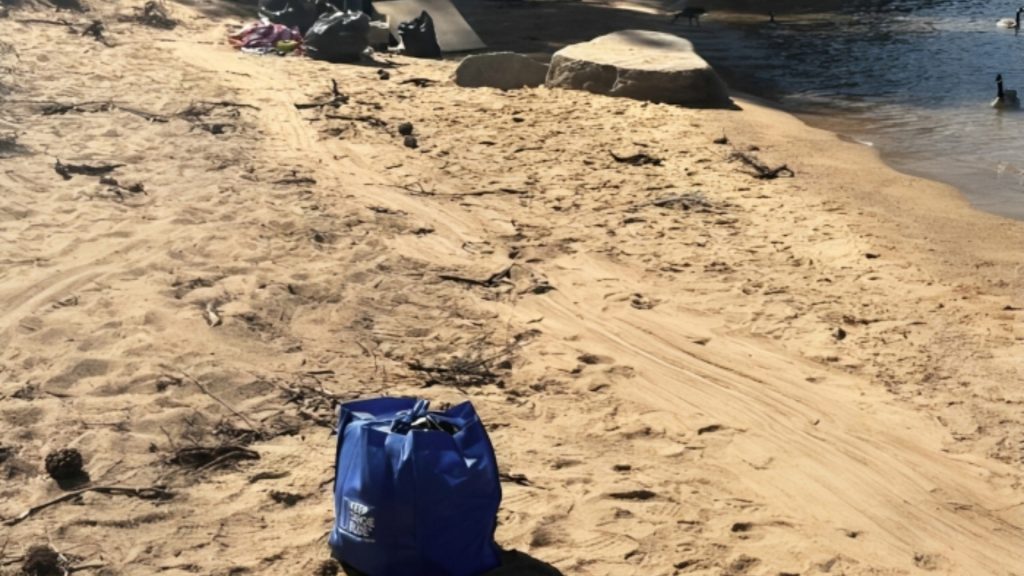
Researchers even found buoys, fabrics, and cigarettes alongside different types of PVC products. What’s even more concerning is that many found plastic items from the lake, could not be classified as of yet. About the size of the plastic waste a hydrologic science research professor at the Desert Research Institute, Monica Arienzo, stated “These items were all larger items, the smallest item was probably about the size of a pencil eraser.” In addition to plastic waste brought in by humans, airborne debris, urban areas’ stormwater runoff, and tire wear from adjacent roads also contribute to filling the Tahoe with these microscopic plastic particles.
Measures to Save Tahoe from Plastic Pollution
According to scientists Lake Tahoe’s widespread microplastic pollution has reached its lethal extent. We genuinely need to step up right now and take this seriously. As far as our understanding, protecting this natural bliss requires an all-inclusive approach. Neither the state government nor the communities working actively to reduce the impact of pollution can solve the issue alone. Only when all hands join together can bring a positive outcome come to life.
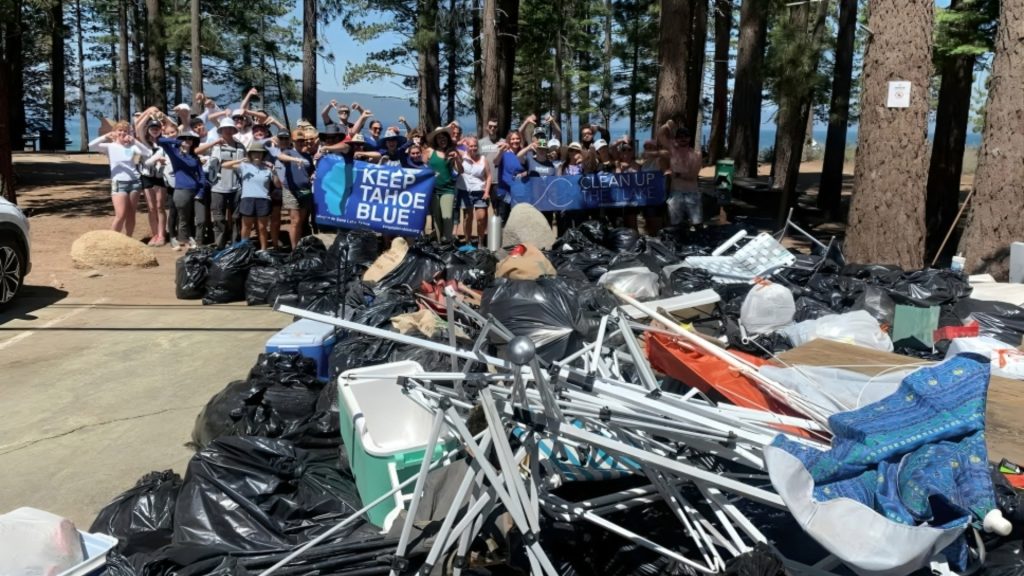
Together, we need to focus on both the sources of plastic waste and measures to mitigate its current plight. Alongside promoting awareness and cautioning tourists regarding plastic waste, we must consistently remove waste from the shores to the depths of Lake Tahoe to bring about the desired result. Here are some measures we can implement to combat this environmental crisis:
1. Policy Change
For the sake of reducing the current level of microplastic abundance, the state governor must enact a ban on the usage of plastic straws, bottles, bags, and utensils nea-shore areas. Strict regulations is the language understood by many negligent tourists and will cease the persistent plastic waste when implemented.
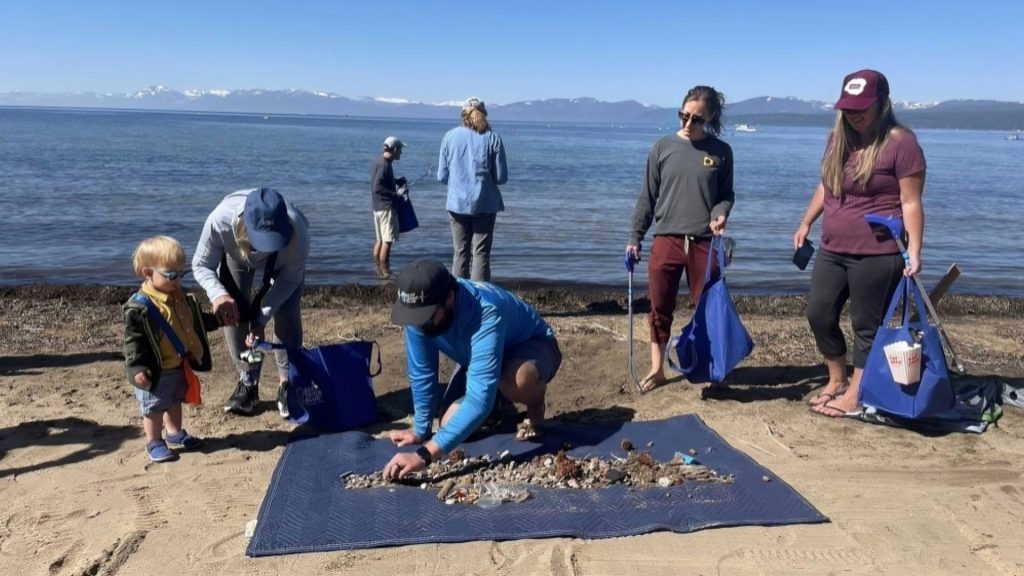
Moreover, the government should institute policies for the stores around Tahoe to refrain from selling items with harmful plastic content. Instead, there should be an effort to ensure the availability of biodegradable alternatives for purchase and use. Making these environmentally friendly options easily accessible would surely encourage responsible behavior among tourists.
2. Public Awareness
Without people being aware, we can’t reach any solution. Everyone nature enthusiasts should take it as their duty to make people aware of it. They need to make people understand the brutal consequences of plastic waste. And, educate them on reusable alternatives and encourage responsible habits regarding waste disposal.

In order to reach a broader group, launching educational campaigns can be a great step. Besides, nature enthusiasts, teachers can play a significant role by raising awareness about the issue in their respective classes.
Community Collaboration
Cleaning up alone won’t make any significant difference unless you’re part of a collective effort, that’s a bitter truth. The easing news is that there are already some communities that are formed and contributing solely to restoring Lake Tahoe to its original purity. Keep Tahoe Blue is one such non profit environmental organization that is dedicatedly engaged in activities to protect the Lake Tahoe Basin to Keep Tahoe Blue.
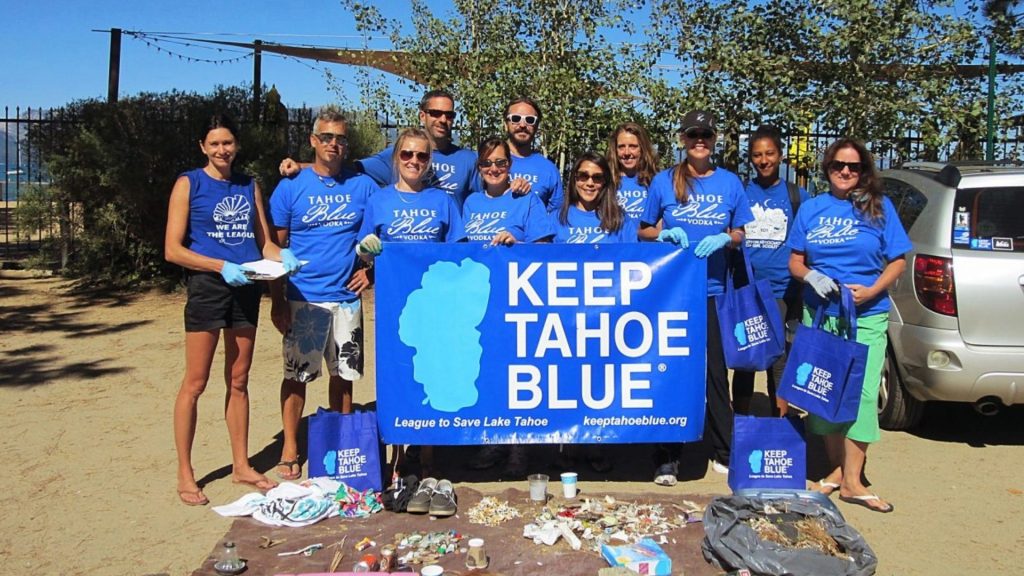
As responsible citizens, we all should take part in their activities. By joining a community, we can volunteer to clean up the shore and encourage responsible practices among tourists. While scientists are diligently working on inventing bioremediation techniques to remove microplastic from the depth of water, we too can contribute by participating in their research. Why wouldn’t we put our knowledge into action to safeguard our beloved Tahoe?
How Was The Lake Formed?
All beautiful things arise from disasters, and so does our enchanting Tahoe. The lake, located in the Sierra Nevada mountain range, was believed to have formed from the collapse of a volcanic crater, the faulting gave formation to the rise and fall of the landscape. From now, around 24 million years ago, the region block was crafted through heavy uplifting. One of the principal faults made the eastern margin into Carson Range; on the western side, Sierra Nevada developed.

The “up thrown” and “down thrown” fault blocks created a large valley. Mt.Pluto lent land with the lava as it formed a dam across the Truckee River. Due to snowfall and streams flowing in the basin, it eventually turned into the lake as we know it today! After the faulting, the Ice Age appeared so glaciers formed on the western side leaving behind moraines and U-shaped valleys adorning the entire scenery.
How Large Is The Lake?
The fact that Tahoe is the largest freshwater lake in the Sierra Venada region, and the largest alpine lake in North America, should be enough to answer the very question. Standing at 122,160,280 acre-feet, the five Great Lakes are larger in volume when compared. Moreover, about 2/3 of the shoreline of Lake Tahoe is present in California. So, if you simply give it a thought the lake straddles Nevada and California together.
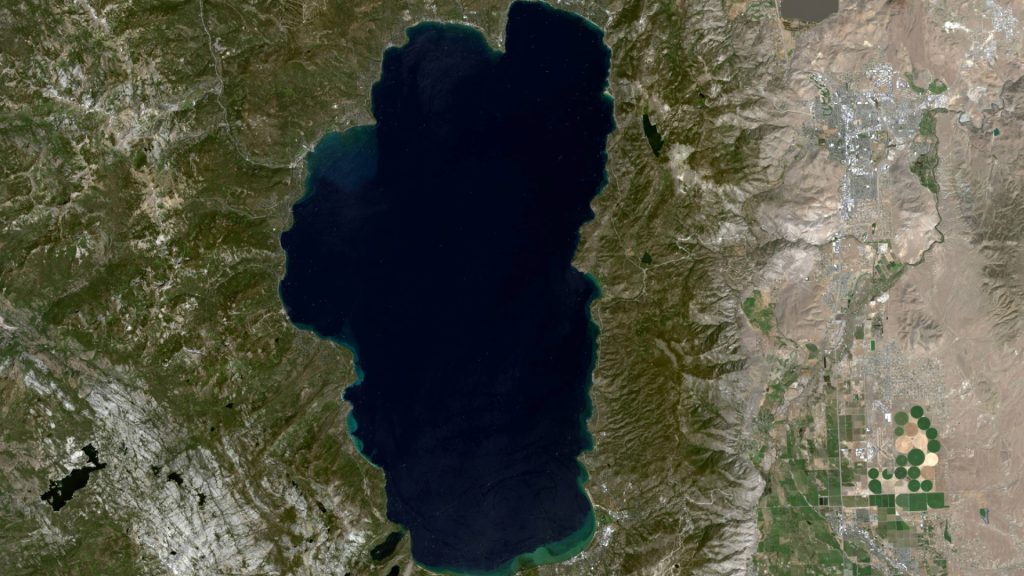
Accordingly, there is one state line in South Lake Tahoe, and the other is in Crystal Bay on the North Shore. Here’s a quick info, Tahoe measures 22 miles at the widest, and longest point. Not only did it make it one of the largest lakes but also one of the deepest ones in the world, with the deepest point at 1,645 feet.
How Clear Is The Water?
In the 1860s, the lake waters allowed stunning visibility up to 100 feet in depth. Unfortunately, the clarity has reduced by 25% in recent decades. Today, Tahoe struggles with murky visibility due to the issue of microplastic waste. The geology that once kept the lake transparent is now being overpowered by the environmental impact of poor human activities.

The average temperature and elevation in the region inhibit the growth of algae, and are now grappling with the consequences of plastic pollution. The water has been turning greenish in polluted zones. The soil types that formed the basin’s natural filter watershed system are now losing their effectiveness gradually. The incursion of microplastic litter is weakening the watershed system and degrading the crystal-clear beauty that Tahoe once displayed.
Where Does Lake Tahoe’s Water Go?
The majestic Tahoe being the 11th deepest lake in the world holds a lot of water. The snow-melt runoff and rain from the 63 tributaries in the 312-square-mile watershed can add 65% water. The other 35% falls on the lake directly as precipitation. This surely raises the question in mind, where does the 212 billion gallons of water go?

Well, 1/3 of the water flows through the dam into the Truckee River at Tahoe City for downstream usage, if any water remains it inflows to the river terminus at Pyramid Lake at 140 miles distance. The other 2/3 that remains isn’t ours to worry about as it evaporates at an average rate of 0.1 inch per day. What is mind-boggling is the fact that this could serve a Los Angeles-sized state if it was possible to be recovered. Also, it reminds us how the polluted water is passing through and contaminating the waters of other areas.
Reminders for Your Next Visit To Lake Tahoe
The beauty of Lake Tahoe is unparalleled, and witnessing its blue waters is a one-time chance that you shouldn’t miss. While ensuring your safety during this blissful trip is your top priority. We’d say, at present it’s equally paramount to prioritize the safety of the lake environment. Well, some planning can come in handy.

When planning your visit, consider bringing biodegradable utensils if you intend to enjoy a meal near the shores. Additionally, having a tote bag on hand for collecting and disposing of your waste ensures you leave the area clean. Besides, we also strongly advise taking a moment to remove any plastics you come across during your stroll along the shore. While it may not seem like your job, it is our instinctive responsibility to eliminate waste from the lake area. Here’s to a better environment for all living creatures.
Final Words
Scientists have revealed that microplastic pollution has reached an alarming level and requires our active participation to address it. It’s high time for us to raise awareness and take steps to restore Lake Tahoe to its original serenity. We strongly encourage you to adopt eco-friendly practices, such as using biodegradable utensils, carrying a tote bag for waste disposal, and actively participating in cleaning up plastics around the shore.

Through these actions, we can contribute to preserving the ethereal beauty of Lake Tahoe for future generations. Only our collective efforts can make a difference. Let’s unite together to protect Lake Tahoe, not only for ourselves but for the countless lives that call it home.





GIPHY App Key not set. Please check settings